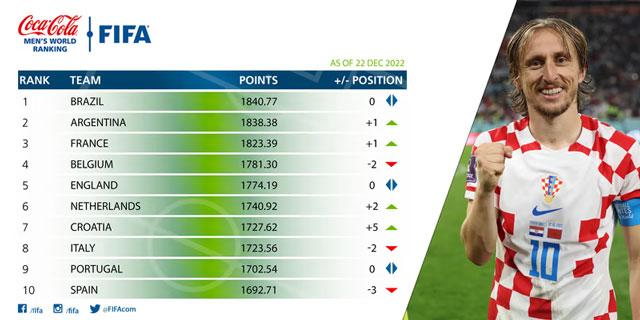In the latest release of FIFA’s rankings,the United States Men’s National Team (USMNT) finds itself in familiar territory,maintaining its position amid ongoing competitive challenges in international soccer. Meanwhile, Canada has made significant strides, achieving a new all-time high rank that underscores the growth and development of soccer in the nation. As both teams prepare for upcoming fixtures, the implications of these rankings will undoubtedly influence their strategies and aspirations on the global stage. This article delves into the current standings of both teams, analyzing the factors contributing to their rankings and what it means for their futures in international competition.
USMNT Stagnates in FIFA Rankings Amidst Global Competition
The latest FIFA rankings have revealed a stagnation for the US Men’s National Team (USMNT),as they remain static while their northern neighbors,Canada,climb to an all-time high. The USMNT’s current position highlights an ongoing struggle to maintain momentum in a highly competitive global soccer landscape.With teams across the globe sharpening their skills and making significant strides in player development, the lack of movement within the US ranks raises questions about the effectiveness of their strategic initiatives and player selections.
In contrast, Canada’s ascent in the rankings underscores a shift in North American soccer dynamics. Factors contributing to this rise include:
- Increased investment in youth soccer programs and talent identification.
- Enhanced player development pathways leading to better-performing athletes.
- Resilient performances in key international fixtures.
This juxtaposition of the two teams illustrates the evolving landscape of soccer in North America, were traditional powerhouses are now facing fierce competition. As the USMNT looks ahead, addressing these challenges is crucial for reclaiming their position among the world’s elite teams.
Canada Reaches Historic High as National Team gains Momentum
The Canadian national soccer team has unveiled a remarkable surge in the FIFA World Rankings, achieving a historic high that reflects their evolving stature in international football. This ascent is attributed to a combination of strategic management, young talent, and increasingly competitive performances on the global stage. The squad, guided by head coach John Herdman, has fostered a cohesive unit that not only excels in domestic leagues but also competes vigorously against traditional powerhouses. Key players, including Alphonso Davies and Jonathan David, have been instrumental in propelling the team’s upward trajectory.
As Canada’s profile in soccer grows, the emphasis on youth development and scouting has become pivotal. The nation’s football programs are now attracting significant attention, leading to investments in training facilities and grassroots initiatives. The positive momentum is not just visible in the rankings but also in the stadium performances, drawing larger crowds and fan engagement. A look at recent matches showcases Canada’s tactical evolution and skill, as evidenced in their last five fixtures:
| Opponent | Match Result | Competition |
|---|---|---|
| Mexico | Win (2-1) | World Cup Qualifier |
| Panama | Draw (1-1) | Gold Cup |
| Honduras | Win (3-0) | World Cup Qualifier |
| USA | Loss (0-1) | International Pleasant |
| Jamaica | Win (4-1) | World Cup Qualifier |
Expert Analysis: Strategies for Improvement and Future Prospects for US Soccer
As the FIFA rankings indicate a plateau for the US Men’s National Team (USMNT), the path to improvement appears to hinge on several strategic initiatives. Investing in youth development remains paramount, as the country must cultivate homegrown talent capable of competing on the world stage. Establishing strong partnerships with local clubs can enhance training infrastructures and scouting networks, creating a pipeline of skilled players.additionally, an emphasis on data analytics and sports science will help coaches identify and address players’ weaknesses, optimizing performance through tailored training regimens.
Looking forward, the USMNT can benefit from a more integrated approach to international friendlies. Engaging with higher-ranked teams during pre-tournament preparations can provide valuable experience and foster resilience against diverse playing styles.Furthermore, adapting to the evolving dynamics of the game, including utilizing advanced technologies in training and match preparation, is crucial. The prosperous integration of these elements may not only elevate the team’s performance but also offer a robust foundation for long-term success in international competitions.
In Retrospect
As the latest FIFA rankings reveal a static position for the united States Men’s National Team (USMNT),Canada continues its upward trajectory,achieving a historic high. This snapshot of North American soccer not only showcases the evolving landscape of the sport in the region but also highlights the ongoing challenges and opportunities faced by both teams. With the World Cup approaching on the horizon, the USMNT will seek to break free from its current stagnation, while Canada aims to build on its success. As fans and analysts alike await their next fixtures, the competitive spirit between these two nations promises to provide intriguing storylines in the coming months. The rankings may be static for now, but the dynamics of the game continue to shift, setting the stage for an exciting future in soccer for North America.




